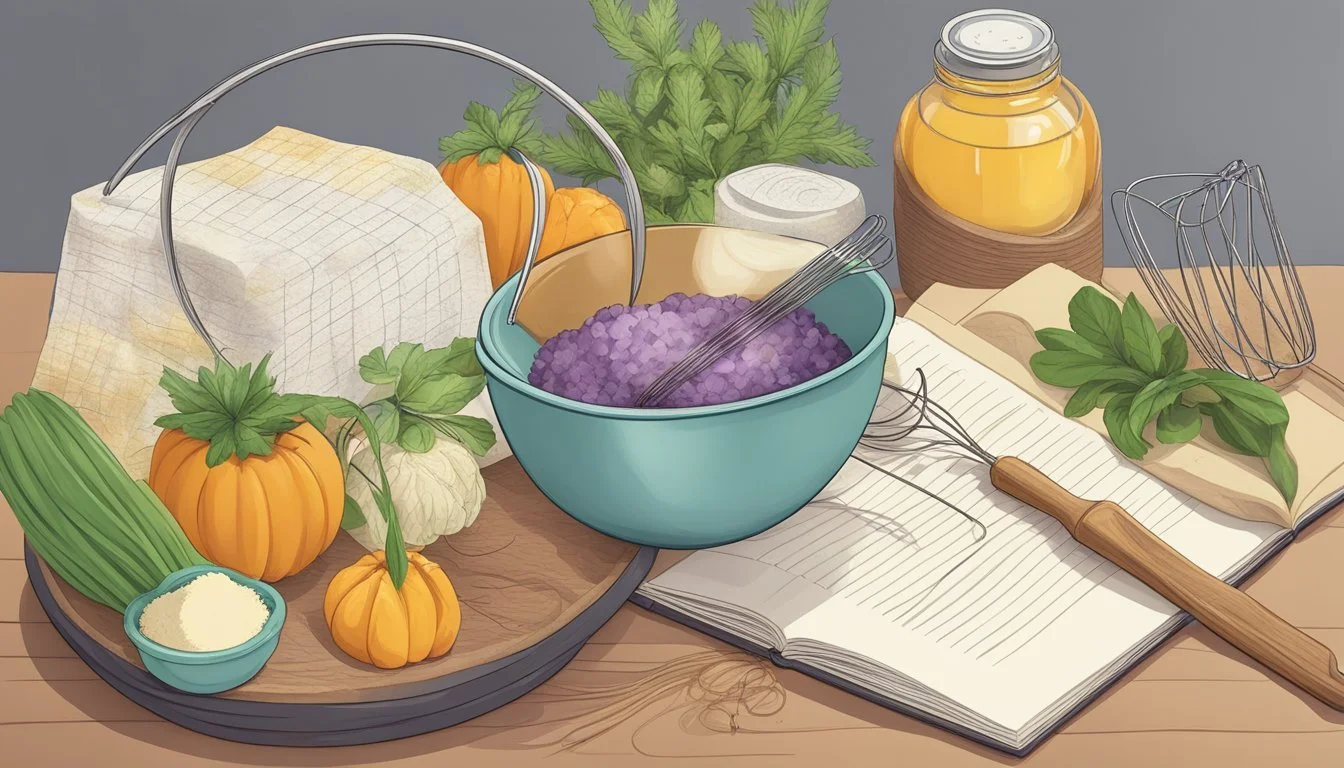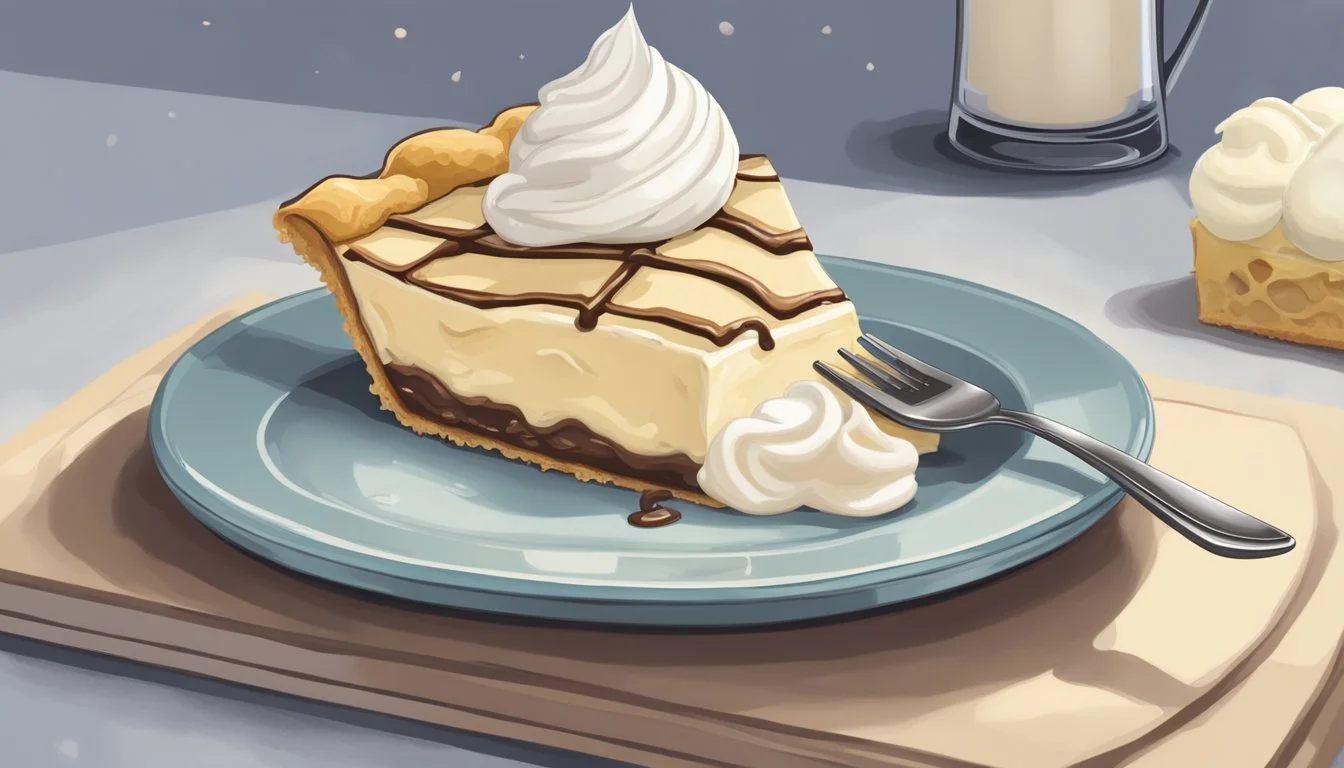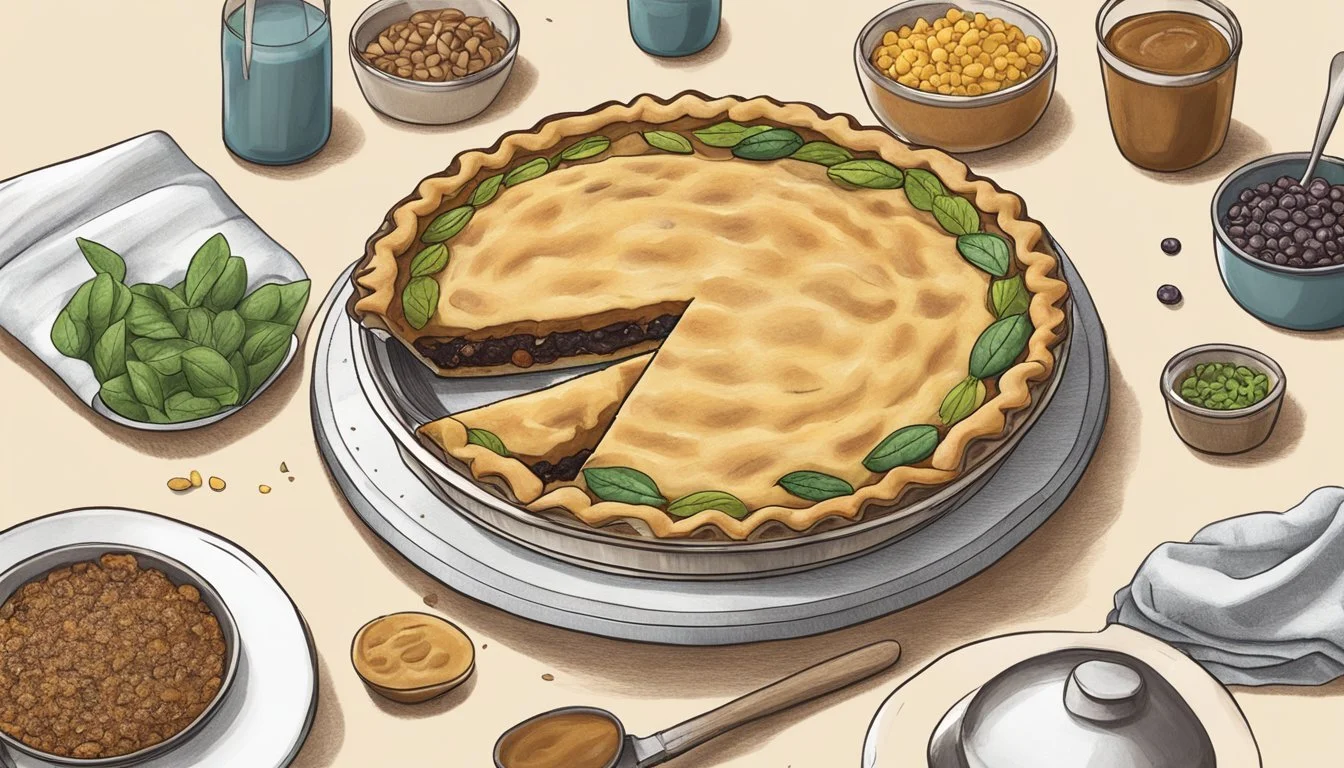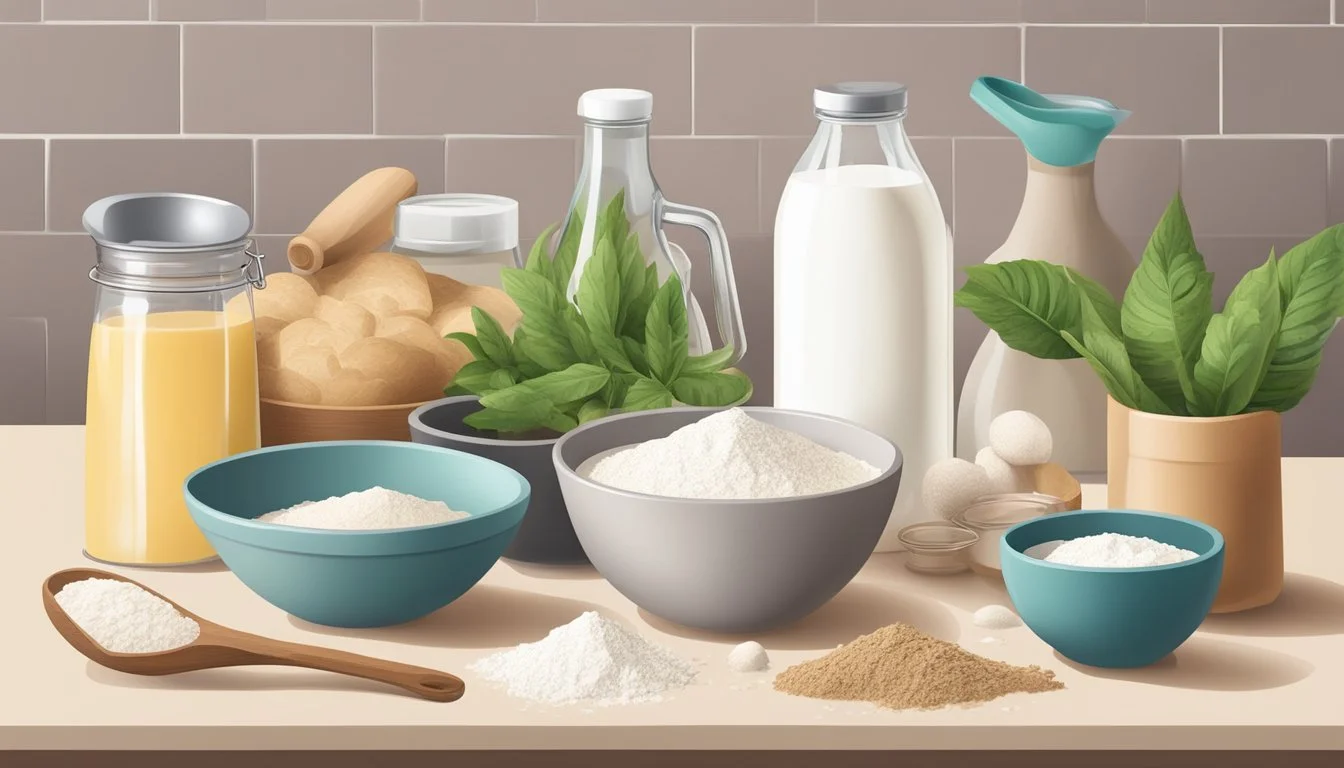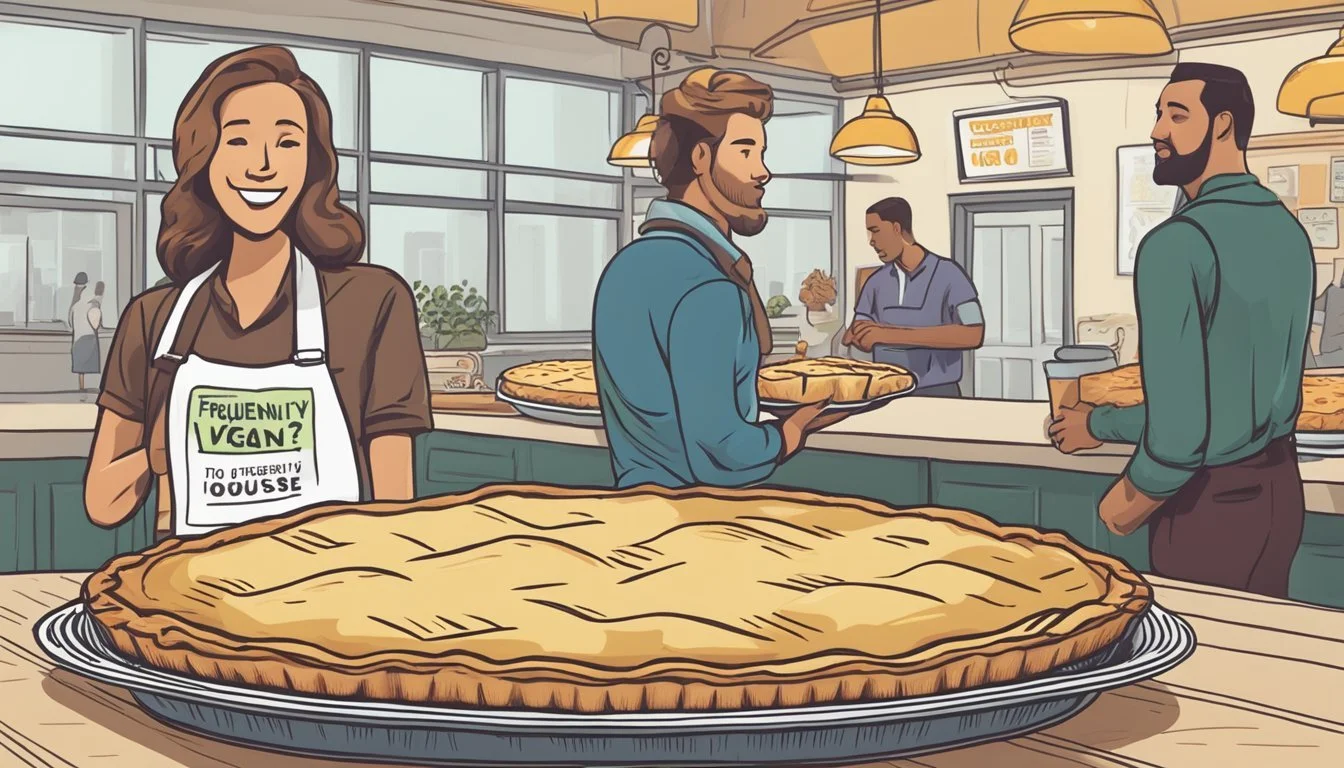Is Toll House Pie Vegan?
Unveiling the Facts About This Classic Dessert
Toll House Pie, often celebrated for its rich, decadent flavor, traditionally features ingredients that are not vegan. The classic recipe calls for butter, eggs, and chocolate, which are staples in many desserts (What wine goes well with desserts?) but pose a challenge for those following a vegan diet. However, the increasing demand for plant-based alternatives has inspired a wave of culinary innovation, allowing vegans to enjoy similar indulgences that align with their dietary choices.
The key to a vegan Toll House Pie lies in the substitution of ingredients. Dairy butter can be replaced with vegan margarine or plant-based butters, while eggs can be substituted with a variety of binders such as flax eggs, chia eggs, or commercial egg replacers. Vegan chocolate chips are readily available in most supermarkets, ensuring that the essential chocolatey goodness of the pie remains intact.
These adaptations have made it possible for the iconic Toll House Pie to be reinvented in a format that vegans can enjoy. As more home cooks and bakeries experiment with plant-based recipes, vegan versions of this beloved dessert are becoming increasingly accessible. Not only do these vegan options cater to those with dietary restrictions, but they also offer an alternative to those looking to reduce their consumption of animal products without sacrificing taste.
Understanding the Basics of Vegan Baking
In vegan baking, the appropriate selection of plant-based ingredients and effective substitutes is crucial to replicate the textures and flavors traditionally achieved with animal-based products.
Defining Vegan Ingredients
Vegan ingredients are those that do not come from animals and include grains, nuts, seeds, fruits, vegetables, and leguminous plants. In the context of vegan baking, a recipe must exclude all animal-derived ingredients, which encompasses dairy, eggs, and in some cases, honey.
Dairy-free: Plant-based milks such as almond, soy, oat, and coconut milk are used instead of cow's milk. Vegan butter is derived from plant oils and it is a common replacement for traditional butter.
Egg-free: Ingredients like applesauce, mashed bananas, or commercial egg-replacers are used to bind and add moisture to baked goods without the use of eggs.
Plant-based: Every ingredient must come from plants, offering a wide array of options from whole wheat flour for structure to natural sweeteners like maple syrup for sweetness.
Common Vegan Baking Substitutes
When traditional baking recipes are adapted to be vegan, common substitutes for eggs, dairy, and fats are utilized. Below are preferred alternatives.
1 tablespoon ground flaxseeds + 3 tablespoons water = 1 egg (good for binding)
¼ cup unsweetened applesauce = 1 egg (adds moisture)
Butters and Fats:
Vegan butter (palm oil, soybean, olive, or coconut-based)
Dairy:
Soy, almond, oat, or coconut milk (used in equal measure to cow's milk)
Soy or coconut yogurt (used in place of traditional yogurt)
Leavening Agents:
Baking soda + vinegar (acts as a rising agent)
Using these ingredients and substitutes allows bakers to create vegan versions of classic recipes, such as a Vegan Tolouse Pie, without sacrificing flavor or texture.
Toll House Pie Overview
The Toll House Pie, often celebrated for its rich taste and resemblance to chocolate chip cookies, is traditionally not vegan due to its reliance on dairy and eggs. In this section, the composition of the classic Toll House Pie is examined, followed by an exploration of how it can be adapted to a vegan-friendly version.
Traditional Toll House Pie Composition
The traditional Toll House Pie recipe consists of a flaky pie crust filled with a sweet mixture that includes eggs, sugar, butter, and chocolate chips. Specific ingredients typically called for in the recipe are:
Eggs: They add structure and richness.
Sugar: A combination of granulated and brown sugar adds sweetness and depth of flavor.
Butter: It contributes to the creamy texture and overall taste.
Chocolate Chips: The defining feature of any Toll House Pie.
Flour: Used as a thickening agent.
Pie Crust: Usually a pre-made or homemade crust that serves as the base.
The mixture is then baked in an oven at around 325 degrees Fahrenheit until set, creating a gooey, chocolatey dessert.
Vegan Variations of Toll House Pie
To create a vegan version of Toll House Pie, each non-vegan ingredient is substituted with a plant-based alternative. These swaps include:
Vegan butter or margarine: Replaces dairy butter.
Flaxseed or chia eggs: Used to replace chicken eggs.
Non-dairy chocolate chips: Ensure they are vegan-certified.
Vegan pie crust: Many store-bought crusts are accidentally vegan, or a homemade crust can be made with vegan shortening.
Vegans might also include other binding agents or flavor enhancers such as different types of flour or non-dairy milk to achieve the desired consistency and taste of the original Toll House Pie.
Essential Ingredients Breakdown
When constructing a vegan version of the classic Toll House pie, one must carefully substitute ingredients while understanding their roles to achieve a similar texture and flavor to the traditional recipe.
Role of Flour in Baking
All-purpose flour is crucial as it provides structure to the pie due to the gluten content. When moistened and heated, it traps gases, giving rise to the pie's body. For a vegan Toll House pie, one will maintain the use of all-purpose flour as it's inherently vegan.
Types of Sugars and Their Uses
Granulated sugar and brown sugar are used for sweetness and moisture. Brown sugar, with its molasses content, lends a rich, caramel-like flavor. Both are typically vegan, but it's important to verify that they are not processed with bone-char, which is a concern for strict vegans.
Fats in Vegan Baking
Traditional Toll House pie employs butter for richness and flakiness. Vegan alternatives, such as vegan butter or vegetable shortening, offer similar qualities without animal derivatives. These fats should be dairy-free and can usually be substituted in equal amounts for their dairy counterparts.
Egg Alternatives for Binding
Eggs bind the ingredients and add moisture. Vegan recipes might use applesauce, mashed banana, cornstarch, or arrowroot powder to replicate this effect. Each alternative brings a different texture and flavor aspect to the pie, so choosing the right one is key to a satisfying vegan result.
Step-by-step Vegan Toll House Pie Preparation
Creating a vegan Toll House Pie involves crafting a flaky vegan crust, a rich chocolate chip filling without animal products, and attentively baking the pie to perfection. Each step ensures the pie is entirely plant-based.
Preparing the Vegan Pie Crust
A vegan pie crust is the foundation of the Toll House Pie. Preheat your oven to 350°F (180°C) to get started. The crust can be made from a mixture of flour, solidified plant-based shortening, and a pinch of salt. Once the texture resembles small crumbs, one should add cold water to form the dough. It is essential to avoid overmixing. Roll it out on a floured surface and place it in a pie plate.
Mixing the Filling
For the filling, one will need vegan chocolate chips, a plant-based butter substitute, and a mix of dry ingredients that typically includes flour and sugar substitutes that adhere to vegan standards. Mix the wet and dry separately, then combine them to create a sumptuous filling that mimics the traditional Toll House flavor but remains loyal to vegan requirements.
Baking Process Explained
With the oven preheated, place the crust into the oven, making sure to prick it with a fork to prevent puffing, and bake for a short period, around 15 minutes. Upon preparing the crust, pour the filling into the crust and smooth it out. The pie should be baked until the top is golden and the filling is set, which may take around 40-45 minutes depending on your oven. Careful attention during baking ensures a perfect vegan Toll House Pie to delight any palate.
Vegan Toll House Pie Nutritional Information
When evaluating the nutritional profile of a Vegan Toll House Pie, one must consider both the caloric and macronutrient distribution, as well as the health implications that come with them. The following subsections will provide specifics on these aspects.
Caloric and Macronutrient Profile
A Vegan Toll House Pie typically offers a balanced macronutrient distribution, with an emphasis on carbohydrates due to the pie crust and sugar content. A standard slice, which is approximately one-eighth of a 9-inch pie, might contain:
Calories: Approximately 450-550 calories
Protein: 3-5 grams
Fat: 20-30 grams, mostly from plant-based sources
Carbohydrates: 60-70 grams; this includes sugars from both the crust and the chocolate chips, as well as the binding agent which may be a syrup or applesauce in vegan recipes.
Health Considerations and Dietary Benefits
While Vegan Toll House Pies are dairy-free and egg-free, making them suitable for vegans, they can be high in sugars and fats. However, the fats present are generally healthier than those found in traditional pies, as they come from plant-based sources rather than animal products. In terms of dietary fiber, whole grain flours or nut-based crusts contribute positively to the overall nutritional content. The protein in the pie is minimal and typically comes from the flour and potentially nuts if used. It is essential to consider portion sizes when consuming this dessert due to its calorie density.
Serving and Pairing Suggestions
When presenting a vegan Toll House pie, one not only aims to impress with the rich flavor of the dessert itself but also with thoughtful accompaniments that complement its taste and texture.
Ideal Accompaniments
For the vegan Toll House pie, serving options should accentuate the dessert's chocolate richness without overpowering it. A scoop of vegan ice cream, particularly vanilla, can provide a creamy contrast to the dense chocolate filling. Alternatively, coconut whipped cream offers a lighter, subtly sweet pairing that enhances the pie without competing for attention.
For those who enjoy a twist, a slice of this decadent pie can be surprisingly well-matched with a small piece of vegan pumpkin pie. This pairing creates a delightful balance between the spiced notes of pumpkin and the intense chocolate of the Toll House pie.
It's recommended to serve the pie slightly warmed to maximize the gooey and lush texture, ensuring the vegan chocolate has a chance to slightly melt, thereby enhancing the overall experience.
Customizing Your Vegan Toll House Pie
Creating a delicious Vegan Toll House Pie is a matter of carefully selecting alternative ingredients that maintain the classic flavor while adhering to vegan guidelines, and applying unique decorative ideas to make the dessert as visually appealing as it is tasty.
Alternative Ingredients and Flavors
To ensure the Vegan Toll House Pie remains true to its indulgent roots, one must consider various substitutions:
Chocolate Chips: Use vegan chocolate chips, ensuring they are free of dairy and other animal products.
Nuts: Consider a mix of pecans or walnuts. Chop the nuts finely for a consistent texture, or leave them in larger pieces for a more varied bite.
Sweeteners: Traditional Toll House Pie recipes often call for white and brown sugar. In a vegan version, these can be substituted with alternative vegan sweeteners like coconut sugar.
Binding Agents: Instead of eggs, opt for vegan-friendly binders such as chia seeds, flaxseeds mixed with water, or commercially available vegan egg replacers.
Dairy Alternatives: For the buttery texture, switch to vegan margarine or coconut oil. In recipes that call for milk, use plant-based options like almond, soy, or oat milk.
Flavorings: Pure vanilla extract can be added to enhance the depth of the pie's flavor.
Fruit Pies: While a classic Toll House Pie features chocolate chips and nuts, one can diversify by adding elements from other pies - think apple crumble or blueberry layers beneath the Toll House filling.
Decorative Ideas
A visually appealing pie often invites the first bite, so decoration should not be an afterthought:
Chocolate Drizzle: Melt some vegan chocolate chips and artistically drizzle over the top of the pie after baking.
Nut Garnish: A handful of chopped pecans or walnuts on top adds texture and visual appeal.
Sprinkles: Add a pop of color with vegan sprinkles just before serving.
Pie Crust Creativity: Experiment with different decorative edges on your pie crust, or cut out shapes from leftover dough to place on top before baking.
Remember, the beauty of customization lies in the freedom to adapt the classic Toll House Pie into something uniquely suited to one's taste while preserving its essence.
Vegan Baking Tips and Tricks
Vegan baking requires careful consideration of ingredients and techniques to ensure successful and delicious outcomes. It's not just about omitting animal products—it's about understanding the science of baking and finding the right plant-based substitutes.
Achieving the Perfect Texture
Proper texture in vegan baking often hinges on the right balance of ingredients and understanding their roles. For instance:
Binding Agents: Flaxseed or chia seeds mixed with water can mimic eggs’ binding properties. Typically, one tablespoon of ground seeds mixed with three tablespoons of water equates to one egg.
Leavening Agents: Baking soda and baking powder are essential for proper rise. One teaspoon of baking soda typically couples with one tablespoon of vinegar or lemon juice to replace an egg in cakes.
Flours: When using all-purpose flour, ensure accurate measurements as too much can render baked goods dense, while too little may cause them to fall apart.
Baking Equipment Essentials
The correct tools can make or break a baking session:
Large Mixing Bowl: A sizeable bowl allows for adequate mixing of ingredients without spilling.
Baking Sheet and Parchment Paper: A sturdy baking sheet lined with parchment paper prevents sticking and ensures even heat distribution.
Equipment Use Pie Weights/Dried Beans Keep pie crusts flat and even during blind baking. Wire Rack Essential for cooling, allowing air circulation around baked goods.
Storing and Freshness
To maintain the freshness and texture of vegan baked goods:
Airtight Containers: Store items like cookies and muffins in airtight containers to keep them moist and fresh.
Refrigeration: Some items, like vegan pie crusts, may benefit from refrigeration before baking, ensuring the fats are cold for the perfect flaky result.
Room Temperature: Generally, vegan baked goods are best enjoyed at room temperature for optimal flavor and texture.
Frequently Asked Questions
In adapting the beloved Toll House pie to meet vegan dietary needs, key considerations must be addressed regarding ingredients and baking techniques. This section provides straightforward answers to frequently raised concerns.
Common Concerns About Vegan Baking
Is traditional Toll House pie vegan?
No, the classic Toll House pie recipe calls for ingredients like eggs and butter, which are not vegan. For a pie to be vegan, it must exclude all animal products, including dairy and eggs.
Can a Toll House pie be made vegan without losing flavor?
Yes, it can. By using plant-based substitutes like non-dairy milk, vegan butter, and egg replacements, one can replicate the richness and taste of the traditional pie while adhering to vegan standards.
What are some plant-based alternatives for eggs in vegan baking?
Common vegan egg substitutes include flax eggs, chia seeds, apple sauce, and commercial egg replacers. These alternatives help to bind the dough and contribute to the overall texture of the vegan Toll House pie.
Are there vegan chocolate chips available?
Definitely. Many brands offer vegan chocolate chips made without dairy. These chocolate chips can be used in vegan Toll House pie to provide the same chocolatey goodness without any animal-derived ingredients.
Troubleshooting Vegan Toll House Pie Issues
The pie doesn’t set properly. What could be the issue?
The problem could stem from under-baking or incorrect measurements of binding ingredients. Baking the pie for a sufficient amount of time is crucial, and one should check doneness with a toothpick inserted in the center to see if it comes out clean.
Typical oven temperature and baking time:
Preheat the oven to 325°F (163°C).
Bake the pie for approximately 55 to 60 minutes.
How can one ensure their vegan Toll House pie is free of animal products?
Carefully read labels on all purchased ingredients to confirm they do not contain any animal-derived components. This includes the crust, as some pre-made pie crusts may contain lard or butter.
How can nutritional information be maintained while making a vegan Toll House pie?
Individuals mindful of calories and nutritional content can opt for lower-calorie sugar substitutes, gluten-free flour, or add nutrient-dense ingredients like nuts or seeds to their pie, balancing indulgence with health considerations.


